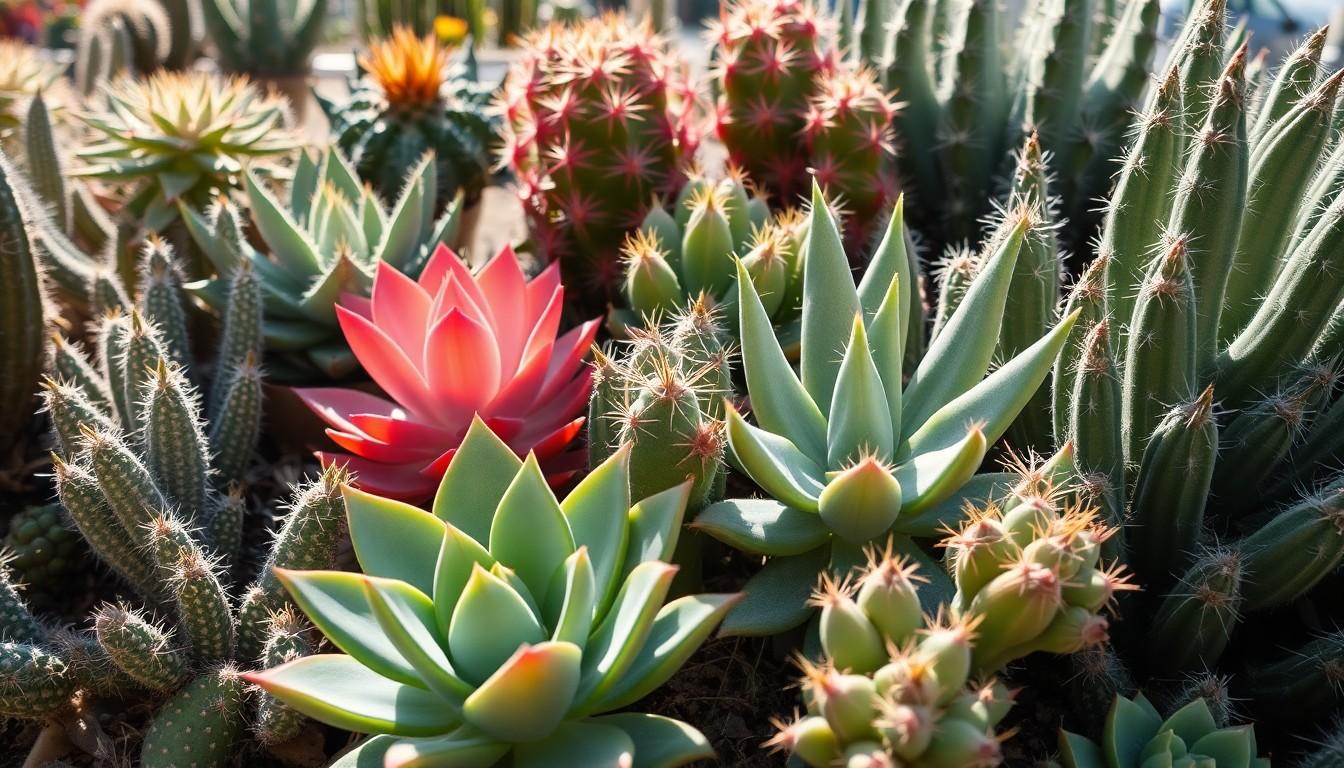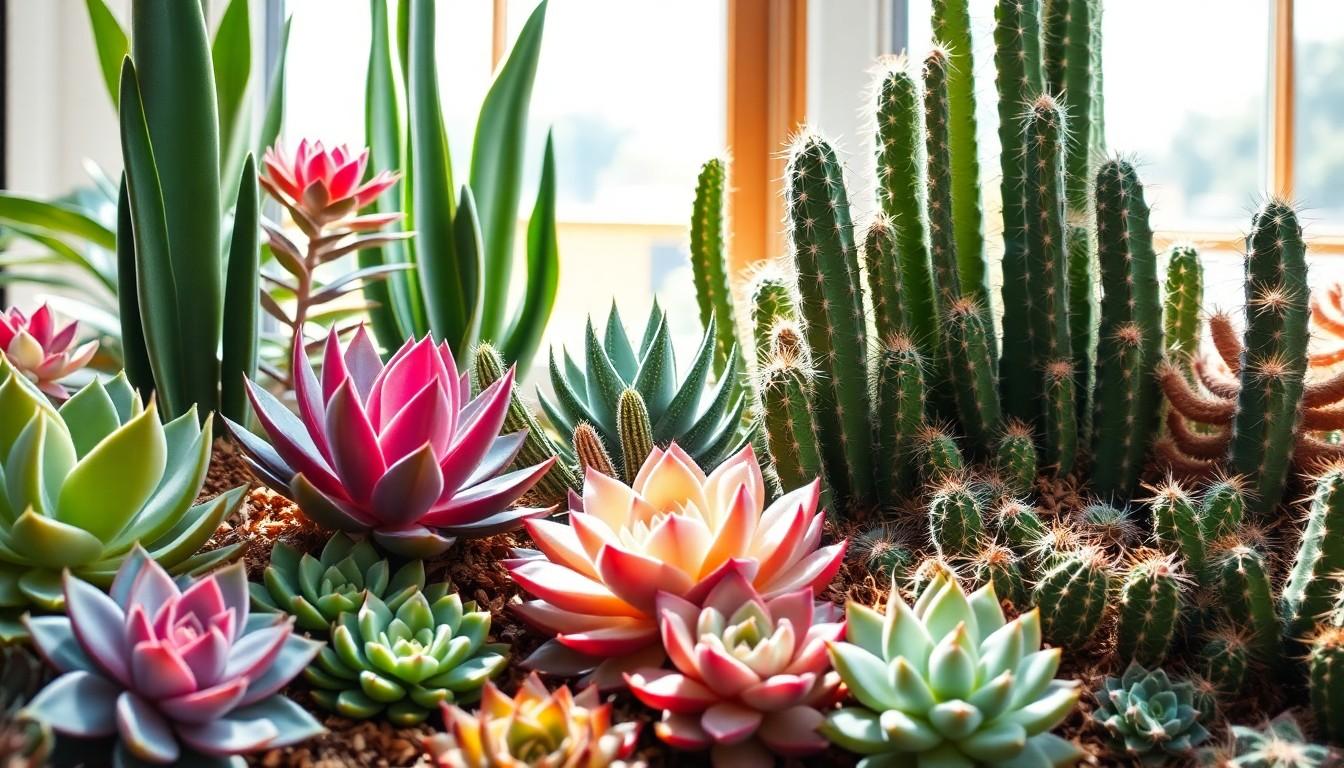When it comes to houseplants, succulents and cacti often steal the show. With their quirky shapes and low-maintenance needs, they’ve become the darlings of plant lovers everywhere. But amidst all the Instagram posts and Pinterest boards, a burning question remains: are succulents actually cacti? Spoiler alert: the answer’s a bit more complicated than a simple yes or no.
While both thrive in dry conditions and boast fleshy leaves, they belong to different plant families. Think of it as a botanical family reunion where not everyone is related, but they sure do look alike. So grab your watering can and settle in as we dig deeper into this prickly debate. You might just find yourself with a newfound appreciation for these fascinating flora.
Understanding Succulents and Cacti
Succulents and cacti both flourish in arid environments, yet they represent distinct classifications within the plant kingdom. Exploring their definitions reveals their unique attributes.
Definition of Succulents
Succulents encompass a diverse group of plants characterized by fleshy leaves or stems that store water. This adaptation allows them to survive in dry climates. Varieties include aloe, agave, and jade plants. They thrive in various growth conditions, and while many prefer bright light, some can tolerate shade. Watering practices vary, with a general guideline of allowing soil to dry out between cycles.
Definition of Cacti
Cacti represent a specialized family within succulents, classified as Cactaceae. Their defining trait is the presence of areoles, which are small structures from which spines, flowers, and branches grow. Examples include the saguaro and prickly pear. Cacti typically require sunlight and have unique adaptations, such as modified leaves that form spines, aiding water retention. Unlike other succulents, cacti possess a specific structure for storing moisture in harsh conditions.
Key Differences Between Succulents and Cacti

Succulents and cacti exhibit distinct features. Understanding these differences enhances knowledge about each group.
Morphological Differences
Succulents display a wide range of forms. Many possess thick, fleshy leaves or stems, enabling water storage. Cacti, specifically, have areoles, small structures that produce spines and flowers. This characteristic sets them apart from other succulents. Furthermore, cacti often grow with unique shapes like columns or pads. In contrast, succulents such as jade plants have leaves that vary in size and thickness. Notably, succulents can include non-cacti varieties, showcasing even broader morphological diversity.
Environmental Adaptations
Environmental needs differ between these groups. Succulents can survive in various conditions, with many thriving in partial shade or direct sunlight. Cacti adapt exceptionally well to extreme heat and drought. Their unique structure allows for efficient water retention and reduced moisture loss. Most cacti feature specialized photosynthesis, minimizing water usage through a process called CAM (Crassulacean Acid Metabolism). While both groups thrive in dry climates, cacti display specific adaptations for harsher environments. Understanding these critical adaptations clarifies the functional roles each plant type plays in ecosystems.
Common Misconceptions About Succulents and Cacti
Confusion often arises between succulents and cacti. Understanding their differences clarifies common misconceptions.
Are All Succulents Cacti?
Not all succulents are cacti. Succulents encompass a broader category of plants that store water in their leaves and stems. Among these are various species such as aloe, agave, and jade plants, each belonging to different families. Cacti, however, fall specifically under the Cactaceae family. This distinction signifies that while all cacti are succulents, not all succulents are cacti.
The Diversity of Succulents
Succulents showcase remarkable diversity. From the rounded shapes of echeveria to the architectural forms of haworthia, these plants present a variety of leaf textures and colors. They can adapt to numerous environments, featuring adaptations for both sunlight and shade. Notably, their fleshy leaves, which store water, reflect their ability to survive in dry conditions. Many gardeners find enjoyment in this extensive spectrum of forms.
Care Tips for Succulents and Cacti
Succulents and cacti require specific care for optimal growth. Understanding their needs enhances their health and vibrancy.
Watering Needs
Watering succulents and cacti depends on environmental factors. It’s essential to allow the soil to dry completely between waterings. Overwatering can lead to root rot, a common issue. A thorough soaking is necessary, but ensure proper drainage afterward. During the growing season, which typically spans spring through summer, these plants might require watering every 1 to 3 weeks. Adjust frequency based on the humidity and temperature of their environment. In the dormant winter months, cut back watering significantly. Many succulents and cacti thrive with minimal water, making them ideal for busy individuals.
Light Requirements
Bright, indirect light is vital for most succulents and cacti. These plants generally thrive in conditions mimicking their native habitats. Placing them near windows that receive full sunlight ensures they receive necessary energy. However, some varieties adapt to lower light situations successfully. When indoors, monitoring light exposure enhances their growth. Outdoor settings can provide beneficial direct sunlight, but gradual acclimation to full sun prevents sunburned leaves. Too much direct sunlight, particularly in harsh summer months, can be detrimental. Understanding specific light needs helps maintain vibrant and healthy plants.
Conclusion
Understanding the distinction between succulents and cacti enriches one’s appreciation for these fascinating plants. While they share traits suited for arid environments their classifications reveal a deeper complexity. Succulents encompass a vast array of species with unique adaptations beyond the Cactaceae family. Cacti stand out with their specific features and survival strategies.
By recognizing their differences gardeners can provide tailored care that meets each plant’s needs. This knowledge not only fosters healthier plants but also enhances the joy of cultivating these resilient beauties. Embracing the diversity of succulents and cacti opens up a world of possibilities for any plant enthusiast.

